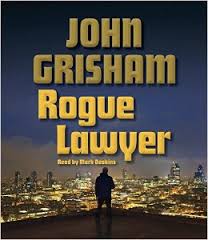Tricks to Writing Descriptions in First-Person POV
Today editor Linda Clare continues our look at Fatal Flaw #10: Description Deficiencies and Excesses. Knowing how, when, and in what way to add in description can often be tricky, so take a look at these suggestions Linda offers (if you missed the first post covering this fatal flaw, read it here).
This month we’re examining ways to balance description in fiction. Writers often struggle to find this balance—too much description bogs down pace and tension; too little will muffle the immersive experience readers crave. In a first-person story this is especially true.
Manage Camera Angles
A first-person point of view brings the camera as close as it gets. We know only what the character knows, and we feel what the character feels. In your own first-person viewpoint, you take in a wide range of objects, sounds, smells, tastes, and textures every moment. If you tried to write realistically to include all this, the reader wouldn’t know what to pay attention to, what was important, and what was simply enriching the scene.
In fiction, it’s important to manage the camera shots the first-person character experiences, including mostly details that point to the story problem—even if the character and the readers don’t realize it yet.
Remember, describing something in detail says to readers, “Remember this! It’s important!” Being less descriptive or leaving out a detail says, “This isn’t vital to the story—move along.”
Stay in Scene
Ideally, readers will perceive your “I” voice character as he/she moves through the story as if it were real life. Yet when description—or worse, exposition—intrudes into a scene, readers are stopped and forced to go in another direction. Often these kinds of descriptions slow the pace and ease tension as well, making it easier for readers to close the book.
If the POV character remains present in the scene, readers are less likely to stray. Writers setting stories in earlier eras or strange places will often set a scene and then break away from the real-time action in order to “educate” readers about some historical event, scientific technique, or other information. If this happens, readers may wonder who is giving them this info. Does the “I” voice suddenly break into a recital of encyclopedic knowledge? This can yank the reader out of the character’s head.
Instead of using description as information, let the character experience what you don’t explain, bringing the camera ever closer.
Make Emotional Connections
All this camera and scenic management points to one goal: your character creating an emotional connection with readers. Writers hear a lot about emotions in fiction, and for good reason—emotions are what keep readers reading and caring about the story. If you can cause readers to invest in and identify with the character’s emotions, you’ve probably hooked them. And in first-person fiction, these emotions are more important than ever.
First-person demands the closest possible camera shot because it is generated in the character’s mind and heart. To make the most of this close relationship, filter all descriptions through the character’s thoughts and, more importantly, her feelings and attitudes. When those feelings and attitudes change, readers want to see that process.
We usually have reasons for changing our minds. As you describe the character’s world, be sure to show the makings of decisions in a logical fashion that readers will identify with. Many fans of first-person fiction want to feel as though they become that character in the story.
Let’s take a look at Before and After examples to illustrate these points:
Before:
I sat at the far end of the long massive banquet table, across from Lord Havemuch, Sir Gotmore, and Lady Stickyfingers. Overhead hung colorful banners of Havemuch’s heraldry. Lord Havemuch’s family traced its ancestry to the War of Roses, a series of battles fought in medieval England from 1455 to 1485 between the House of Lancaster and the House of York. The name Wars of the Roses (sometimes mistakenly referred to as War of the Roses) is based on the badges used by the two sides, the red rose for the Lancastrians and the white rose for the Yorkists. Major causes of the conflict include: 1) both houses were direct descendents of King Edward III; 2) the ruling Lancastrian king, Henry VI, surrounded himself with unpopular nobles; 3) the civil unrest of much of the population; 4) the availability of many powerful lords with their own private armies; and 5) the untimely episodes of mental illness by Henry VI. The wars ended when Richard III, the last Yorkist king, was defeated at the battle of Bosworth in 1485 by Henry Tudor founder of the house of Tudor. I was served veal on a Wedgewood plate.
I shouted above a lively discussion going on between Gotmore and Stickyfingers. “Could someone please pass the salt?” They were talking about 1411, the year that Richard Plantagenet was born to Richard, fifth earl of Cambridge, and Anne Mortimer. His father was the son of Edmund, the first Duke of York, who was in turn the fourth son of Edward III. If Henry VI had died before 1453, the year of the birth of Edward, Prince of Wales, then Richard would have undoubtedly been crowned King of England, since there was no other noble (since the death of Henry VI’s uncle and heir Humphrey, Duke of Gloucester, who had died in 1447) with such a strong claim to the throne at that time, other than Richard himself.
Lady S looked my way. “Pardon me, did you say something?”
I smiled. “Yes, I did.” I pointed to the silver salt shaker, a replica of the same set used by Henry VI himself. “The salt. Please pass the salt.” The silver was ornately carved with vines and tiny hearts.
She leaned across the table and shook her finger. “Why, I did no such thing!” Her enormous diamond brooch glittered in the candlelight.
I started to repeat my request, but then remembered: last week, my physician had warned me about the dangers of too much salt. I had to limit my daily intake to 1,500 milligrams per day lest I complicate my high blood pressure problem. “What a lovely brooch,” I said.
After:
I sat at the far end of the long massive banquet table, across from Lord Havemuch, Sir Gotmore, and Lady Stickyfingers. Overhead hung colorful banners of Havemuch’s heraldry. Lord Havemuch’s family was rumored to trace its ancestry to the Wars of Roses, but I didn’t believe a word Havemuch said.
What a pompous old fool. My stomach lurched when I saw the sickly-looking piece of overcooked veal lying helplessly on my Wedgewood plate. Why did I think this dinner was a good idea?
I shouted above a lively discussion between Gotmore and Stickyfingers. “Could someone please pass the salt?” They were going on and on about 1411, the year that Richard Plantagenet was born to Richard and Anne Mortimer.
Lady S stared down her beaky nose. “Pardon me, did you say something?”
I forced a smile. “Yes, I did.” I pointed to the salt shaker, a cheap replica of the type used by Henry VI. “The salt. Please pass the salt.” My blood began to boil—Stickyfingers was such a snob.
She leaned across the table until her bosom was practically in the gravy and shook her finger at me. “Why I did no such thing!” Her gaudy diamond brooch—probably a cheap imitation—glittered in the candlelight. Havemuch and Gotmore stopped shouting and stared at me.
I started to repeat my request, but then remembered: last week, my physician had said I had to limit my daily intake. Darned high blood pressure. That did it. I was never coming to one of these awful dinners again.
“What a lovely brooch,” I said through clenched teeth.
In the Before version, it’s easy to understand why this exposition about the Wars of the Roses (lifted verbatim from Wikipedia) takes us away from the scene and tries to educate us. When the “I” character interacts with Lady Stickyfingers, readers don’t see or hear anything more from Havemuch and Gotmore, risking the possibility that readers will forget they’re on stage. And the POV “I” voice simply reports about what’s happening, with little emotion.
The After version removes the exposition and instead adds the character’s attitudes and feelings about the surroundings. We get what we need to know, but the info is filtered through the character’s judgments. Note that Havemuch and Gotmore are mentioned again as a way to remind readers of who’s on stage. The “I” voice reaches her decision not to attend another dinner in a gradual manner, as the little things pile up.
In first-person fiction, the camera is so close and tightly focused that managing camera angles becomes an important tool in describing a scene. If more than two players are on stage, it’s often necessary to refocus the camera lest readers forget what they’ve been shown. Breaking away from action to insert expositional or descriptive information about the story is a pacing and tension killer that jerks readers away from the scene. Instead, try to filter vital info through your first-person character’s thoughts, feelings, and attitudes, and don’t forget to show readers the steps that character takes to reach decisions.
Your Turn:
When you write in first-person, how do you manage what your readers experience? In first-person descriptions, why do you think it’s important to convey your character’s feelings? Want to share any examples of overdoing description in first-person POV that you’ve read recently in a novel? Or share a great example of “just right”?










hi there!
i’m a soon to be surrealistic writer.
this style requires a very descriptive element and shares the same qualitative states as high fantasy where the description is not just demanded, it is the art.
how i overcome this is by being descriptive in the beginning of the story before we engage the POV, even though this is done by the narrative itself.
the main character should never shine over the people in the room unless they not important.
the narrative character is the light where the other characters are the colours, a spotlight on them makes radiate in the main persons light but they still keep their colour, we just may not see it in its natural state till theirs a conflict shunning the light.
on the paragraphs, i filter it just to the point.
if the points of the sentences do not connect in theory for the paragraph, i start all over.
if theres more i wanted to say that has meaning… i use it in another sentene.
the master of the camera zoom was always leo tolstoy in war and peace. he gave no regards, he wrote in russian and french… they translated the russian.
one part of the book is no paper, the other is in the readers mind…that gap signified the emotional connection for me.
as much as i want to share, its only possible with your inspiration.
thank you ms.lakin